Improving Communauto's Conversion & Retention Through Strategic Mobile UX Redesign
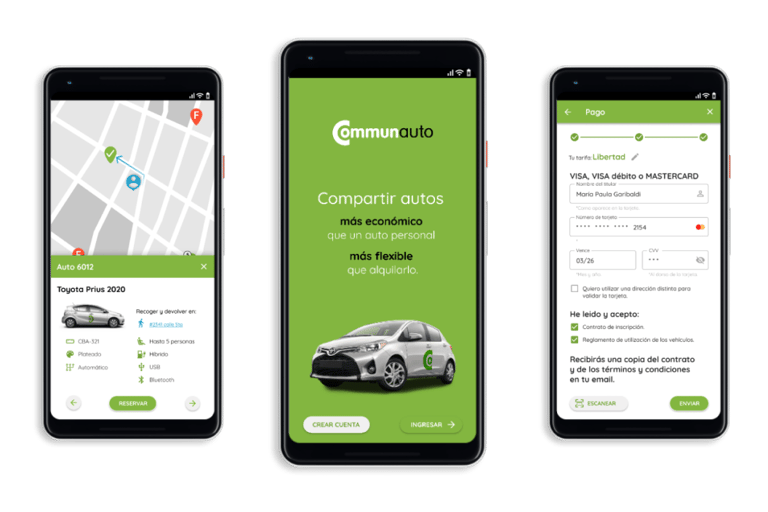

Key Outcomes:
Information Architecture: Improved structure from 18% to validated success.
Usability Testing: Task completion increased from 40% to 100%.
User Pain Points: Fixed key issues in sign-up, pricing clarity, and bookings.
Market Strategy: Spanish localization validated for audience growth.
ROLE:
End-to-end product design from research through validation.
Not long ago, I discovered Communauto in Montreal, the oldest car-sharing service in North America. I was impressed by their eco-friendly mission and strong commitment to creating a positive environmental and social impact in dense urban areas.
However, despite the value they provide, I noticed that user feedback across their Meta page, Reddit, and App Store reviews consistently pointed to issues with the app experience. That gap caught my attention and led me to explore the product as an 8-week case study, following a structured process from research to validation to showcase how I approach complex design challenges.
KEY COMPETENCIES:
User Research & Usability Testing | Information Architecture | Interaction & Visual Design | UX Writing & Content Strategy | Strategic Product Thinking.
What causes frustration or drop-offs for some users?
In the early stage of the project, I realized I needed a deeper understanding of what was happening. To achieve this, I conducted in-depth research to re-evaluate both business objectives and user needs, ensuring alignment between them from the beginning.
On one hand, Communauto had clear objectives:
they wanted to offer a green, cost-effective mobility solution,
improve their operational efficiency, and,
of course, grow their user base.
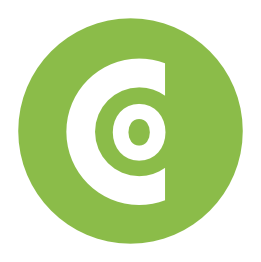

On the other hand, users:
needed a reliable, simple, and affordable service.
wanted to sign up quickly, find a car nearby without hassle, and rent it for short-term use.
Sign-up
Frustration 40%
A surprising 40% of users were frustrated with the sign-up process, finding it too lengthy and complicated, especially with all the sensitive information required.
" I don't feel safe sending sensitive personal documents."
However, I quickly discovered that the reality was more complicated for users than it should have been. To uncover these complexities, I dove into data-driven analysis, collecting feedback from a diverse group of users, including native French, English, and Spanish speakers.
11 surveys and 3 interviews brought some key insights to the surface:
Pricing plan selection
Unclear 60%
Another 60% struggled with the confusing subscription pricing plans.
" Unnecessarily complex pricing plans."
Vehicle booking
Inconsistency 50%
And 50 % of users suggested improvements in the booking process, pointing out the inconsistencies between booking on the app and on the website.
"I wish I had been informed about car availability—it would have helped me plan better instead of just relying on luck on weekends."
Mobile App vs Website
Use of Mobile App 80%
80% of users relied on the app for their bookings, showing that improving the app could significantly impact user satisfaction.
How can I streamline the user flows for sign-up, pricing selection, and vehicle booking in the mobile app?
With a clear problem definition, I applied a creative matrix to brainstorm potential solutions. I then used the Feasibility, Viability, and Desirability Matrix to evaluate and create a prioritized list of features, that balanced user needs with technical and business realities.
Out of the original solutions, 75% were discarded, leaving me with a 25% that should be done:
Easy Sign-up
Fewer steps: Use license scanning to speed up data entry.
Access while processing: Let users access some features while documents are being processed, reducing wait times.
Security notifications: Provide alerts about the safety of their personal information.
Intituitive privileges selection rather than a complex fee structures.
Provide helpful suggestions to assist users.
Display a dynamic calculator as user select benefits.
Improved user interface map.
Additional vehicle information in search results to support informed decision-making.
Extra filters to refine search results effectively.
Proactives notifications about upcoming high-demand dates.
Real-time suggestions for vehicle availability
Simplified Subscription Pricing Plan
Enhanced Booking Experience
As I moved forward, I realized that several proposed solutions required a redesign of the information architecture (IA) and interaction design. Given that Spanish-speaking users were notably represented in the earlier research, I opted to develop the IA and prototype in Spanish to target this demographic and explore new market opportunities.
To evaluate the existing IA, I conducted a Tree Test with 11 participants.
The study uncovered critical details:
only 18% of users arrive to the goal,
followed by another 36% who completed 67% of those tasks.




As a result,
I restructured the entire sign-up process within the app, which previously started on the website.
I simplified the navigation steps for both the first-time onboarding and sing-up processes.
I validated the seleccion of privileges when creating a pricing plan.
I modified the ux wording for clarity and engagement.
The new structure allow me to create and iterate on wireframes featuring a modified layout which included new screens for the sign-up process. I then developed a wireflow to test usability, and after the initial iteration, I recognized the need to:
sintetize and remove redundancies
and refine the wording for better clarity
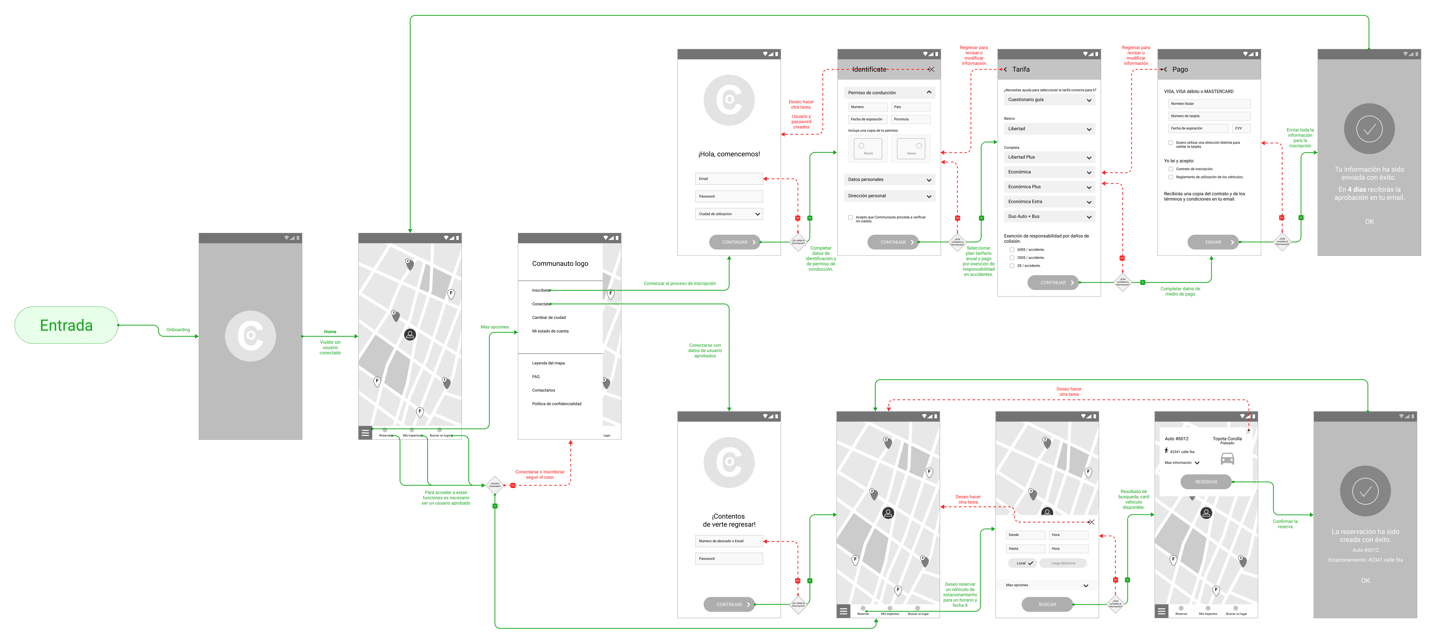

With a clearer vision in place, it was time to update the brand and to improve the usability, consistency and accesibility of the design system.
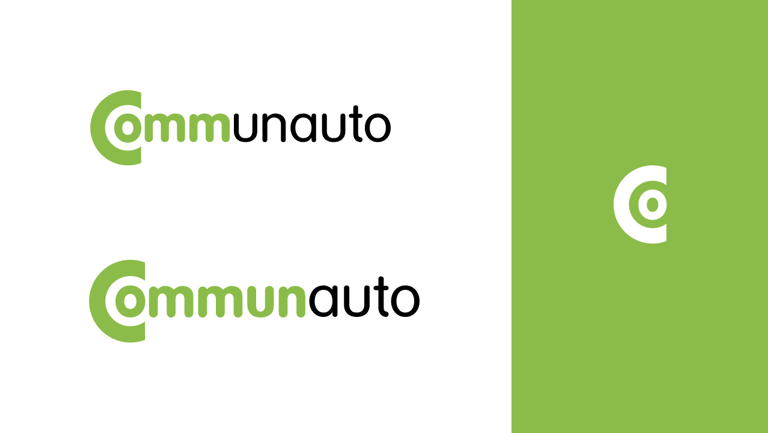

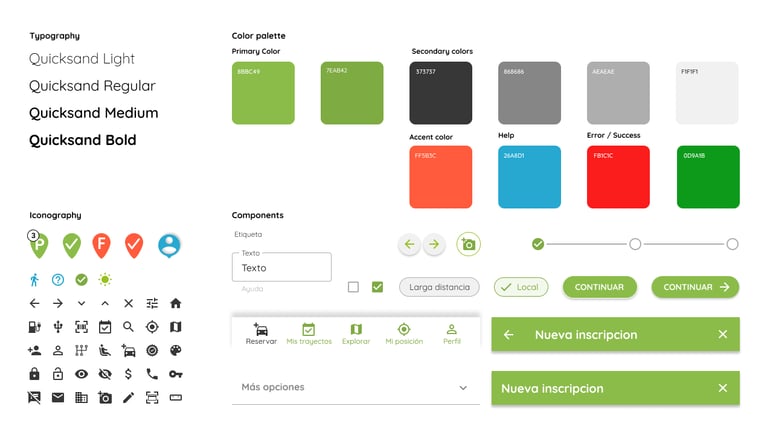

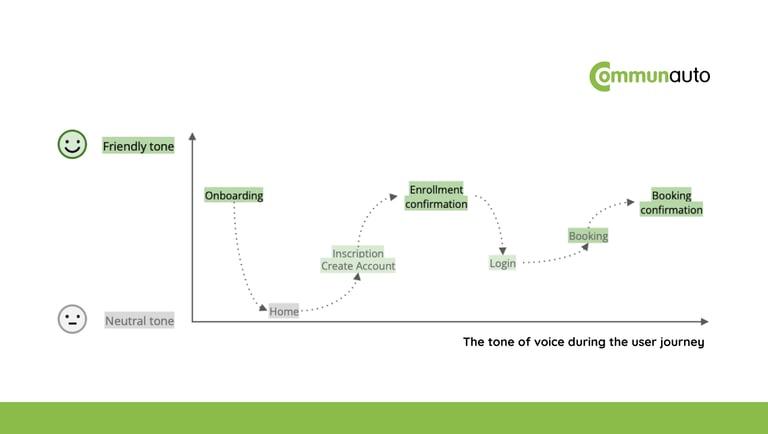

I refreshed the logotype Communauto’s reflecting a sense of Community.
I contributed to a scalable design system based in Google Material Design, and separately crafted a clean, modular visual identity to strengthen brand consistency.
For the UX writing, I adopted a neutral tone to keep users focused, and friendly tone during transition tasks to create a positive atmosphere.
At this stage, it was necessary to validate critical design decisions. I developed a high-fidelity prototype and conducted usability testing, followed by a heuristic evaluation.
After 2 iterations with 2 participant groups and significant adjustments, the final version was ready, with enhanced efficiency, effectiveness, and user satisfaction.
In the 1st round of tests:
60% of participants (3 of 5) struggled with 2 of the 3 tasks.




In the 2nd round of tests:
100% of participants (5 of 5) successfully completed all tasks efficiently and effectively.
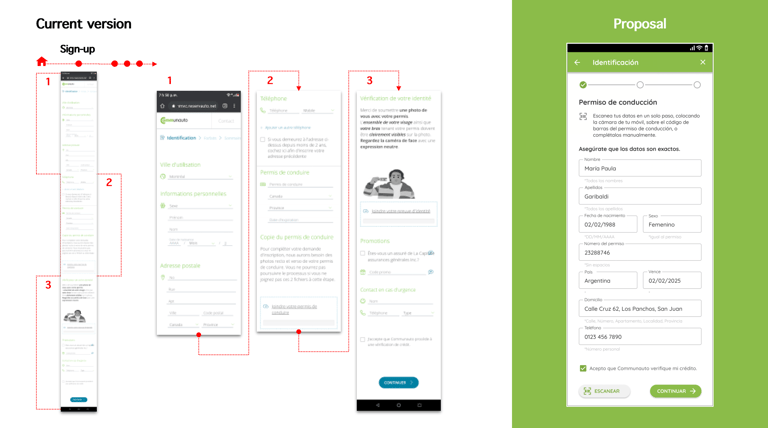

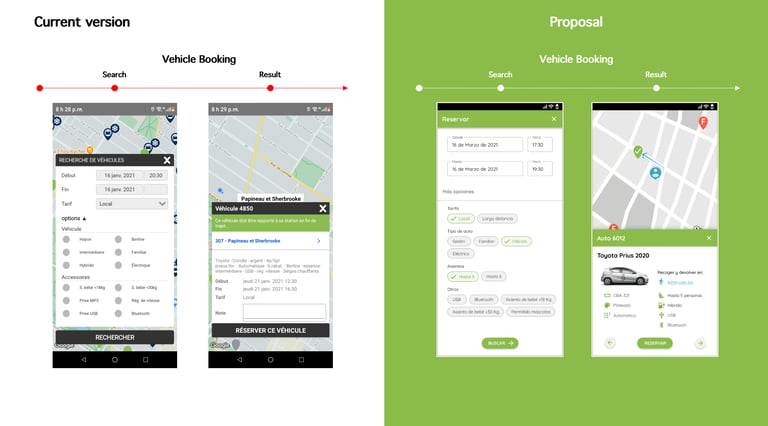

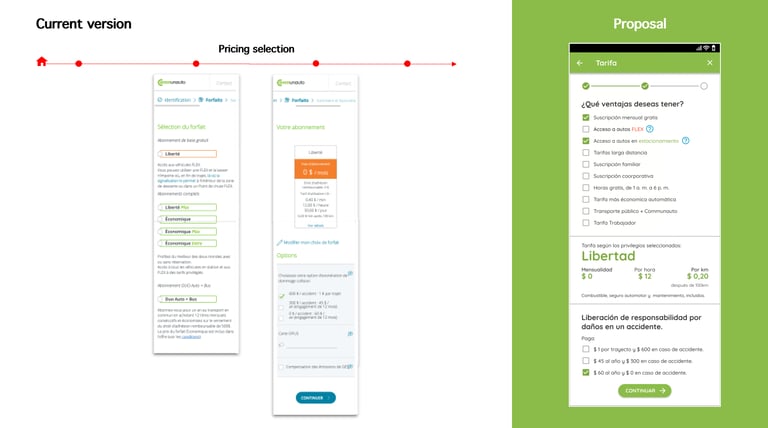

Challenges & Learnings
Limited stakeholder access required assumptions about business priorities based in public information.
Low initial tree test success (18%) signaled misalignment between user expectations and IA, needing iterative testing to refine structure.
Limited data made identifying trends difficult countered with a data-driven, iterative approach to validate design choices.
Impact & Success
Iterative testing boosted task success from 18% to 100%, delivering measurable impact.
Spanish localization unlocked new markets.
Simplification, clear information, and transparency—grounded in usability heuristics— resolved the UX pain points, improving adoption and retention.